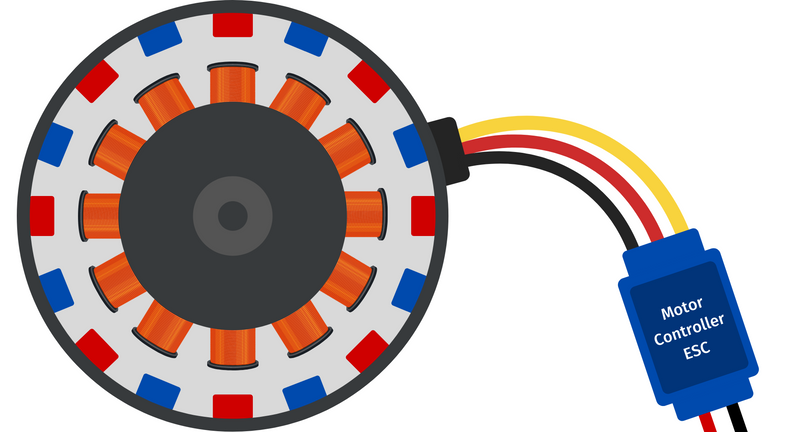Brushless Motor Controller: How It Works and Its Benefits for Robotics Applications

In recent years, brushless motors have become increasingly popular among hobbyists, researchers, and professional robotic engineers. These motors offer several advantages over traditional brushed motors, including better efficiency, higher torque, and longer lifespan. However, to make the most of these benefits, it's important to pair your brushless motors with high-quality brushless motor controllers. In this article, we'll explore how brushless motor controllers work and their benefits for robotics applications.
How Brushless Motor Controllers Work
Brushless motors work by using a series of electromagnets to create rotation. These electromagnets are arranged around the periphery of the motor's rotor, and they are controlled by an external power source. As the rotor spins, the controller manages the current flowing through the electromagnets, adjusting the phase and intensity of the magnetic fields to keep the rotor turning smoothly.
There are two main types of brushless motor controllers: sensor and sensorless. Sensor controllers use additional hardware, such as Hall effect sensors, to precisely monitor the position and speed of the rotor. This information is used to fine-tune the magnetic phase and intensity, resulting in smoother operation and better efficiency. Sensor controllers are typically more expensive than sensorless controllers, but they offer greater precision and control over the motor's operation.
Sensorless controllers, on the other hand, use algorithms to estimate the position and speed of the rotor based on the motor's back EMF (electromotive force) signal. This signal is generated by the motor's coils as they pass by the permanent magnets in the stator. While sensorless controllers are less expensive than sensor controllers, they are typically less precise and may not be suitable for high-precision applications.
Benefits of Brushless Motor Controllers
When used with high-quality brushless motors, brushless motor controllers offer several benefits for robotics applications. Some of the key advantages include:
- Better efficiency: Because brushless motors don't have brushes to wear down over time, they can operate at higher speeds and with greater efficiency than brushed motors. When paired with a high-quality brushless motor controller, the motor can be fine-tuned for optimal performance and efficiency in specific applications.
- Higher torque: Brushless motors are typically more powerful than brushed motors, and they can generate more torque at higher speeds. This makes them ideal for applications that require a lot of power, such as heavy lifting, robotics, and automation.
- Longer lifespan: Because they have fewer moving parts than brushed motors, brushless motors are generally more reliable and have a longer lifespan. When paired with a high-quality brushless motor controller, the motor can be operated in a precise and controlled manner, reducing wear and tear on the motor and extending its lifespan.
- Faster response times: Brushless motors can respond faster to changes in the controller's input signals, which makes them ideal for applications that require rapid acceleration and deceleration. When paired with a high-quality brushless motor controller, the motor can be fine-tuned for maximum responsiveness and speed, making it a valuable tool for robotics and automation applications.
Conclusion
In summary, brushless motor controllers offer several benefits for robotics applications, including better efficiency, higher torque, longer lifespan, and faster response times. When selecting a brushless motor controller, it's important to consider factors such as cost, precision, and suitability for your specific application. With the right brushless motor and controller combination, you can create precise, powerful, and efficient robotic systems that can tackle a wide range of tasks.